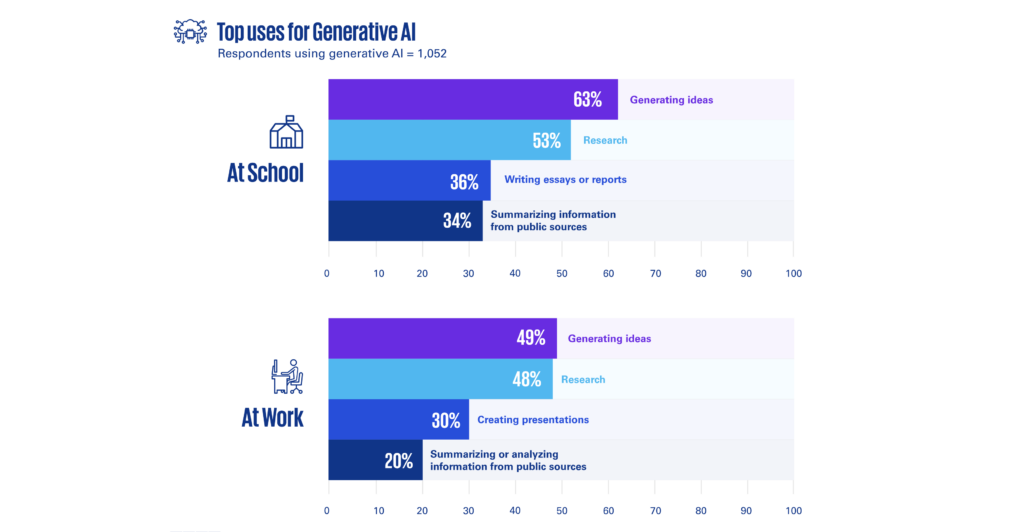
In June, KPMG introduced the Generative AI Adoption Index, a weighted measure with a maximum score of 100 to indicate mass adoption ops artificial intelligence.
The inaugural index clocked in at 11.9, highlighting a rapid explosion in popularity of AI tech within six months.
As students across Canada head back to class, many will use generative artificial intelligence for their research, papers, and even exams—creating ethical dilemmas, privacy concerns, and opportunities for both educators and students, finds recent research by KPMG in Canada.
More than half of Canadian students aged 18+ surveyed by KPMG are using generative AI to help them in their schoolwork—despite an even higher number of them feeling that it constitutes cheating, the findings reveal. AI usage among students is ranges from the innocent—idea generation and research—to the nefarious: relying on tech to pass a test.
Which all serves to beg a question: How do we equip tomorrow’s workforce with the right skillset for AI without having everyone simply “cheat”?
One thing we know is that AI cannot be ignored; accessibility is high, as is impact. The vast majority of Canadian students say AI helps improve the quality of their schoolwork (and grades), and this parallels tech talent feeling that AI improves their workflow.
So, students and workers alike believe that skills around AI are helpful now and will be even more critical in the future. But what’s the difference between using AI and abusing it?

“The growing popularity of these tools puts a lot of pressure on educators and educational institutions to quickly develop and communicate guiding principles and guardrails on how they should be used,” says C.J. James, Partner and National Education Practice Leader, KPMG in Canada. “But the dilemma is, where do you draw the line?”
With a clear demand from students to learn best practices around generative AI, educators and educational institutions must seize the opportunity to expand academic curriculum by offering courses, including AI ethics, says James, setting future workers up for appropriate usage of the tech.
“With so many students feeling like they’re cheating by claiming AI-generated content as their own original work, that’s a big problem,” James says. “Educators will need to become AI literate and students need to know what’s expected of them—If educators can offer more courses about generative AI, it will help students develop the skills they need to use it properly, responsibly, and effectively both for school and in their work careers.”
Currently, educators are taking advantage of AI at a much lower rate than their students, which could create learning and skill gaps that under-prepare students for work.
Clear and honest communication between students and teachers around AI skills and usage is also imperative to developing relevant education programs, James suggests.
“Barely one-third of students tell their educators that they’re using generative AI tools, and most don’t know what their school’s policies are or if there are even repercussions for using it,” according to James. “Educational institutions need to have clear policies on responsible AI that lay out what is acceptable use and what is not.”
Educators must adapt to the rapid digital transformation occurring at societal scale, adopting AI-infused curriculum to sufficiently prepare tomorrow’s wave of talent.
For those already past or otherwise outside of traditional education, remote upskilling programs teach everything from AI to sales skills.
